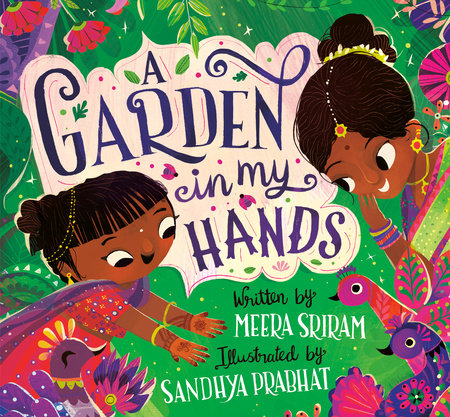A Garden In My Hands:
Scratch Art Henna Hands Craft
by Meera Sriram
When I was a kid, my mother brought home a bag of henna leaves every summer. She ground the leaves into a paste and set it aside until she finished her chores for the day. Then we sat on our verandah floor with the bowl of henna, the air thick with its earthy smell. My mom usually started by applying a circle of henna in the middle of my palm. As she dotted and patted, I watched her face tilt one way and another, her eyes narrowing to fill unfilled spots and wipe away unwanted smears. While my hands carried her carefully crafted art, she hand-fed me dinner and prepared my bed on the open terrace so I wouldn’t stain anything in the house.
In India, where I grew up, and in many countries around the world, applying henna is a common and well-loved custom. In fact, the history of henna dates back to some of our oldest civilizations. It is believed that early Egyptians covered the hair and nails of pharaohs with henna before mummifying them. Natives of desert regions soaked their hands and feet in henna paste for its cooling effect on the body. For thousands of years, several African, Asian, and Middle Eastern cultures have practiced the tradition of using henna for celebrations, body decorations, medicine, and as a healing herb.

The word henna has its origins in the Arabic language. The henna plant, a flowering shrub, contains a reddish-orange dye called Lawsone. The leaves are dried and crushed into a powder or ground into a paste before applying to skin, hair, and nails. Lawsone reacts with a protein in our bodies to leave a red or orange stain that can last for weeks. Henna is applied on the hands and feet in various designs at weddings, carnivals, and on religious holidays. In several cultures, it is used to ward off evil. Henna designs also vary depending on culture and community.
These days, when I sit with my daughter on our patio, squeezing out swirls on her palm from a henna cone, I often talk about my summers in India and the delight of waking up to a sweet scent and pretty designs in a beautiful shade. These memories inspired me to write the picture book, A Garden in My Hands, illustrated by Sandhya Prabhat. In the story, a little girl gets henna done while her mother shares stories of her wedding, the monsoons, and ancestors long gone. More than anything, A Garden in My Hands captures the universal joy of passing down traditions — of celebrating our roots, family stories, and cherished memories.
Scratch Art Henna Hands Craft
Kids can practice this traditional art form themselves by making scratch art henna hands!
1. Get a sheet of scratch art paper and a pencil. If you don’t have any scratch paper, you can use plain white paper and markers.
2. Place one hand on the paper and, holding the pencil in your writing hand, trace the outline of your other hand.
3. Grab scissors and cut out your handprint.
4. Using a stylus tool like a wooden skewer for scratching, draw flowers, dots, squiggles, and swirls to create a vibrant and unique henna design. Or find inspiration from some of the beautiful designs shown below.

When you’ve practiced enough, pick up a henna cone and try the same designs on your palm!
-
Buy the Book:

